Brand Innovation – How to Identify New Growth Opportunities
Every day, your brand has opportunities to positively or negatively impact both current and potential customers. Ultimately, high-quality brand interactions are the difference between people who make purchases and those who take their patronage elsewhere. Brand innovation is a key factor in harnessing customer attention, purchase and ongoing loyalty to ensure growth.
The positive and memorable impact your brand makes on existing or potential customers is critical, because statistics indicate two thirds of people feel conflicted and need to be reassured on multiple occasions and through numerous touch-points before they trust a brand and make a purchase. [1]
In past decades brands were able to generate consumer confidence directly with mass communication strategies such as TV advertising. Now that essential trust factor needs to be developed, nurtured and reinforced through multiple direct and indirect communication routes such as fans, friends, direct marketing and social interaction online. It’s more important than ever for your brand to innovate and leverage new lucrative opportunities that make it, not only highly visible, but known, liked and trusted by your primary audience.
If you’re struggling to make your brand standout and be trusted, liked and referred by your ideal customer then the Personality Profile Performer™ is the online brand building programme you need right now.
Factors That Indicate You’re Missing Lucrative New Growth Opportunities
There are many factors that may indicate your brand is missing lucrative opportunities, and subsequently losing momentum [2]:
- Loss of Profits or Declining Sales: This is one of the most obvious signs that you’re not identifying and capitalizing on new development opportunities, and are losing momentum. You may not realize how severe the problem is until you look at how each quarter stacks up compared to previous years, and the numbers reveal how sales have plummeted. Earlier this year, Dunkin’ Donuts experienced falling profits, and analysts proposed one of the reasons was due to large burger chains, such as Burger King, offering unbeatable breakfast deals to lure loyal Dunkin’ Donuts customers elsewhere.
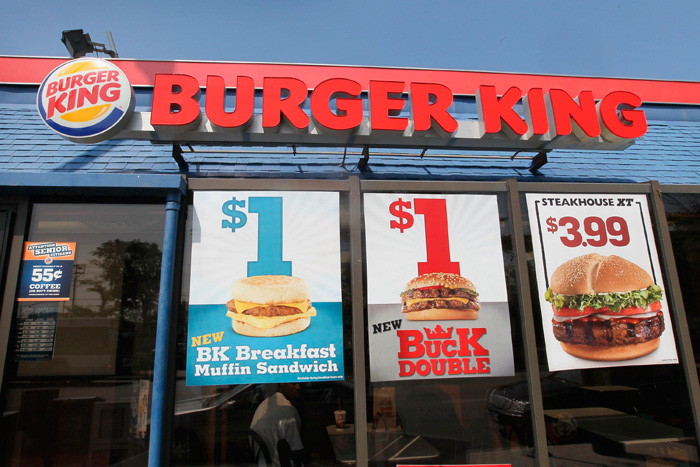
Image via businessinsider.com
- Poor Customer Feedback: Are you systematically tracking customer feedback? Maybe you’ve asked for customer feedback through surveys and aren’t happy with the responses you’ve received. Perhaps client feedback has been benign — your brand’s simply not doing enough for them, which has motivated previously loyal customers look elsewhere. JetBlue, an American low-cost airline, hired a team of over two-dozen people to handle social media with the primary objective of responding fast to customer feedback across social media — the target being a response within 10 minutes. That’s one example of a brand that’s implemented a proactive brand strategy to mitigate and limit poor customer feedback by handling problems quickly and efficiently.

Image via jetblue.com
- You’re Not Consistently Looking for New Customers or Growth Opportunities: If you’re not actively seeking out new customers or ways to grow, you’ll almost certainly miss new openings right in front of you.
- A Decline in Social Media Traffic/Less Engagement With Your Posts: In addition to keeping an eye on overall social media traffic levels, you should also be concerned if there is less engagement with posts or poorer conversions, depending on your overall brand strategy.
- Your Social Strategies Don’t Ultimately Convert Into Sales: Perhaps your marketing team has spent months developing a social strategy with the objective of translating heightened activity into increased sales. If you have one or more campaigns falling short, that’s a strong indicator that your brand is losing momentum and not on top of changing trends. In an effort to combat the negative press generated by the documentary film Blackfish, the SeaWorld brand of amusement parks spent millions to rehabilitate its image, including running an “Ask SeaWorld” campaign where social media users could pose questions to park representatives. Reportedly these efforts didn’t achieve the desired objectives — to stop the brand’s declining attendance numbers. However, the effects of the film could have been even more severe if the park chose not to respond at all.

Image via seaworldcares.com
- Your Products or Services Don’t Perform as Expected in the Marketplace: When new products don’t have the impact you’d hoped for, or older products that had performed well over time no longer compete as well in the marketplace, its probably time to audit your offering thoroughly. A brand audit is effectively a health check of your brand to evaluate areas of weakness and strength. It’s also used to identify new innovation opportunities too.
If you need to evaluate your brand’s vulnerabilities, weak points and areas in need of innovation and change then now is the time to use the Auditing Analysis Accelerator™. It’s an online programme that walks you through, step-by-step, the process of giving your brand a health check. In fact the Auditing Analysis Accelerator™ is a critical brand management tool essential in every brand owner’s arsenal.
Brand Strategies for Growth
Having considered some of the under performance indicators, corrective action is urgently needed:
• Solicit Customer Feedback in Conventional and Non-Conventional Ways:
We’ve already talked about how customer comments could reveal your brand isn’t doing as well as it should in the marketplace because it’s not adequately meeting customer needs. Such feedback could also be useful in shining a light on areas for innovation. In order to be maximally effective, consider methods of getting feedback that are often overlooked.[3]
For example, if you use cancellation tickets or opt-out methods, follow up with customers and find out why they decided to leave. Also, if your brand has an app, have a section where customers can go to give insight on how the company is doing in meeting their needs.
• Ask Employees for Their Views of the Company:
Employees are often your brand’s best brand ambassadors. Take time to understand how they feel about your brand and your company, and find out how you could improve. It’s also useful to ask employees if their friends have expressed opinions about your company, service or product, and if so, what they are. One of your primary objectives should be to ensure you have all your team onboard, behind your brand and motivated because every member of your team can make an important contribution to help it grow. Internal and external alignment is a critical part of your brand success.
• Take a Look at What Competitors Are Doing Well:
It’s also useful to examine the habits and trends of competitors in your sector and evaluate how they’re succeeding. This is a reference but should not become a source for emulation. You need to be different and distinctive which means you have to forge your own path.
You can acquire valuable insights by observing how successful competitors or high performing brands behave online. Sector relevance does have some bearing though when evaluating their strategies.[4] What do they do to find out what customers are thinking and feeling, and how do they capitalize on those opportunities?
• Seek Out Underserved Sectors or Customers:
There’s usually a lot of focus on the top performers in the market, but it’s worthwhile to take a dramatically different approach and view the market from the bottom up. By doing that, you may discover what’s sometimes called a disruptive opportunity. [5] You might decide to offer a product or service that’s more affordable to the bottom part of the market, thereby making it more accessible to everyone.
• Study Societal Trends:
By becoming more aware of trends throughout society, you’ll learn more about the amount of disposable income people have, what they tend to buy, and why. That insight could help you discover where your brand could pivot into an alternative market, reposition, rebrand and dominate. A key question to consider, have you thoroughly mapped out your different customer profiles or buyer personas? You can’t truly meet your customers’ needs if you don’t know their needs, wants, loves, hates and aspirations. Purchaser Personas or Buyer Personas are a critical brand development tool and a core part of the Personality Profile Performer™ online brand building course.

Image via Pixabay
• Highlight Seasonal Opportunities:
Starbucks’ Pumpkin Spice Latte is a perfect example of a product that highlighted a seasonal opportunity.
Furthermore, the product encouraged countless other companies to come up with pumpkin products of their own. You may even want to release products that make it easier for people to keep New Year’s resolutions. [6]
A couple of years ago, the Walgreen’s drug store chain did that by creating a special landing page to highlight six of the most common health-related New Year’s resolutions. Then, they offered associated products to help shoppers get off to a good start with their New Years goals.
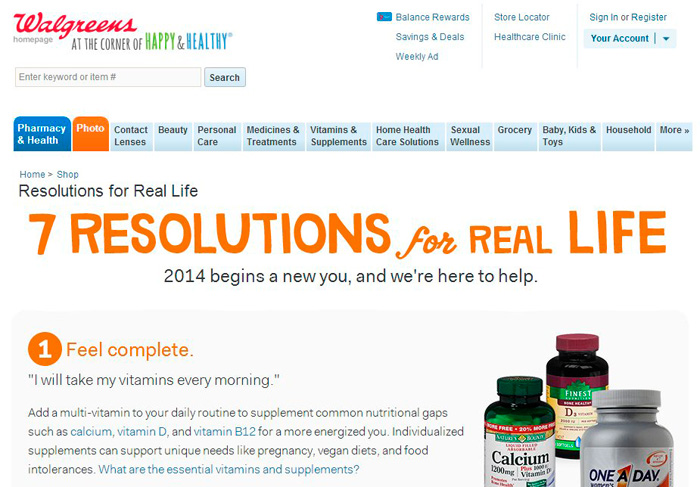
Image via Rohit Bhargava
Branding Building Opportunities to Consider and What to Keep in Mind While Doing So
Here we’ll look at ways you can build your brand after you’ve identified your areas of weakness using a brand audit health check so you can harness and convert potential misses into winning opportunities. Here are some tips to keep in mind as you proceed [7]:
Offer Promotional Giveaways:
Freebies may help you enter a new market by giving potential customers a taste of your brand through your product or service so they can experience how good it really is. When deciding what to give complimentary or offer a limited time use, focus on products or services that are the best representations or experiences of your brand.
The Republic of Tea, a specialty beverage company, does that well by including free samples of its tea within catalogues, and also packaged with every order a customer places. This approach is a great way to get people acquainted with the taste and quality of this upscale tea and its comprehensive range, thereby helping customers discover that this is a brand worth the indulgence.

Image via therepublicoftea.com
The brand also regularly offers limited-time-only products, including teas based on series of popular books. Free samples arguably encourage people to try teas they might not taste otherwise.
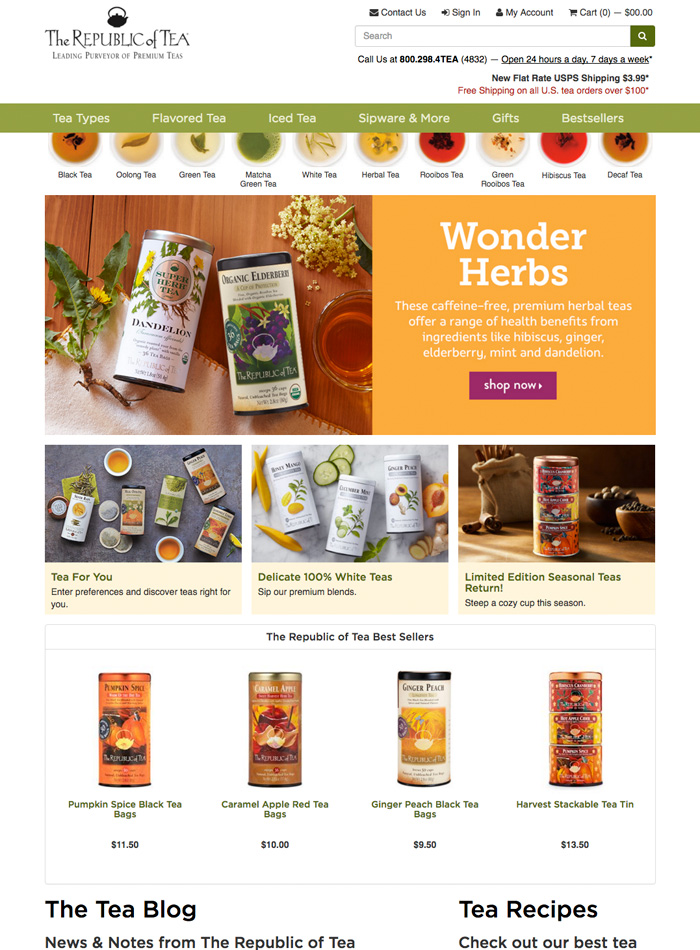
Image via therepublicoftea.com
Position Your Company as an Expert on a Subject:
What can your company explain better than any other, or what need does your product fill? Once you can answer those questions, you’re in a good place to generate content that showcases your company as one worth listening to, but make sure such content is intriguing and creative.
E-mail Customers After Receipt:
Once customers receive your products, e-mail them to ask whether there are things your brand could have done better. To encourage participation, give customers something in exchange such as a discount off a future purchase.
Three Brand Innovation Case Studies
Let’s look at three case studies of companies that harnessed new opportunities in the marketplace and capitalized on them to grow their brands:
1. Toyota/VH1 Save The Music:
Marketing analysts suggest that marketing at music festivals is of growing importance, especially when reaching Millennials. [8] These two well-known brands teamed up in celebration of Lollapalooza, a huge music festival.
They invited people to answer the question “What Does Music Mean to You” on globed ornaments, and broadcast the results on social media. To tie in with this campaign, both companies will present $30,000 worth of music equipment to three Chicago-area schools. This campaign harnessed a missed opportunity because it boosted brand visibility, highlighted CSR [9], and used the power of social media through a special hash tag.
2. Club Mexicana:
This is a London-based SME / SMB vegan Mexican pop-up restaurant [10] that has found success with recipes that both vegans and meat eaters love. The goal is to not only to cater to a growing number of people on a vegan diet, but defy misconceptions that vegan food is bland and not meant for a broader audience. Club Mexicana entered the marketplace at an opportune time, when vegan preferences were becoming more popular.
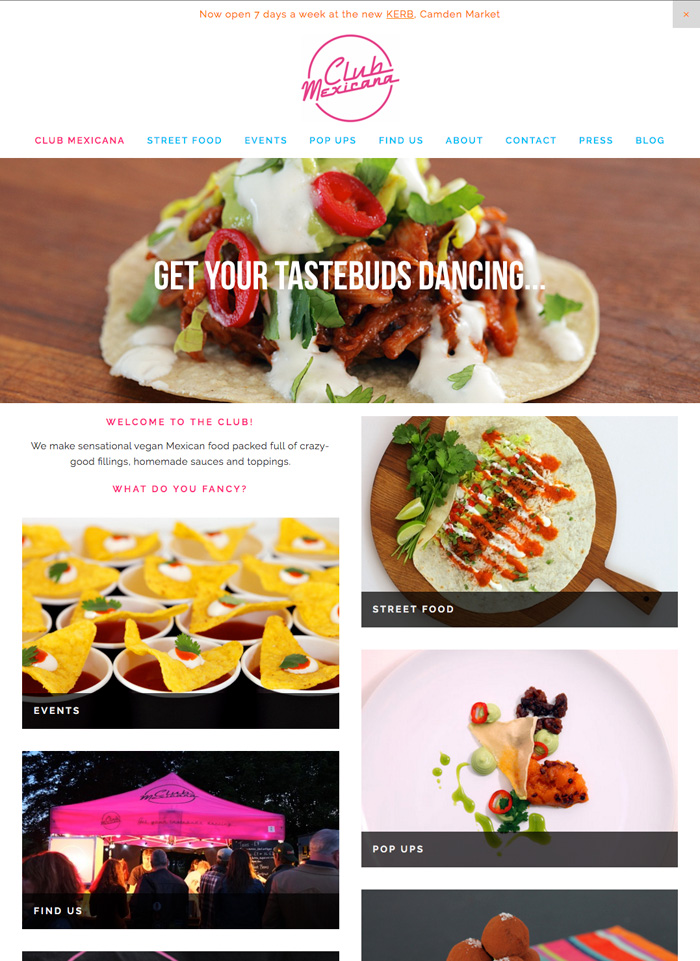
Image via clubmexicana.com
3. MVMT:
24-year-old college dropouts started a massively popular watch brand by offering cool timepieces at reasonable prices. They adopted a direct-to-consumer model, used crowd-funding and financial contributions from friends and relatives to kick-start the company, and recruited professionals to handle things they couldn’t do independently. This three-pronged plan helped them conquer the Millennial market. [12]
As you can see, once you’ve identified signs that indicate your brand is losing momentum in the marketplace, there are multiple ways to get it back on track — a brand audit is definitely required to ensure you achieve the best results. Pay attention to what customers are saying, and evaluate how you can better meet their needs, thereby finding lucrative opportunities you may have previously missed.
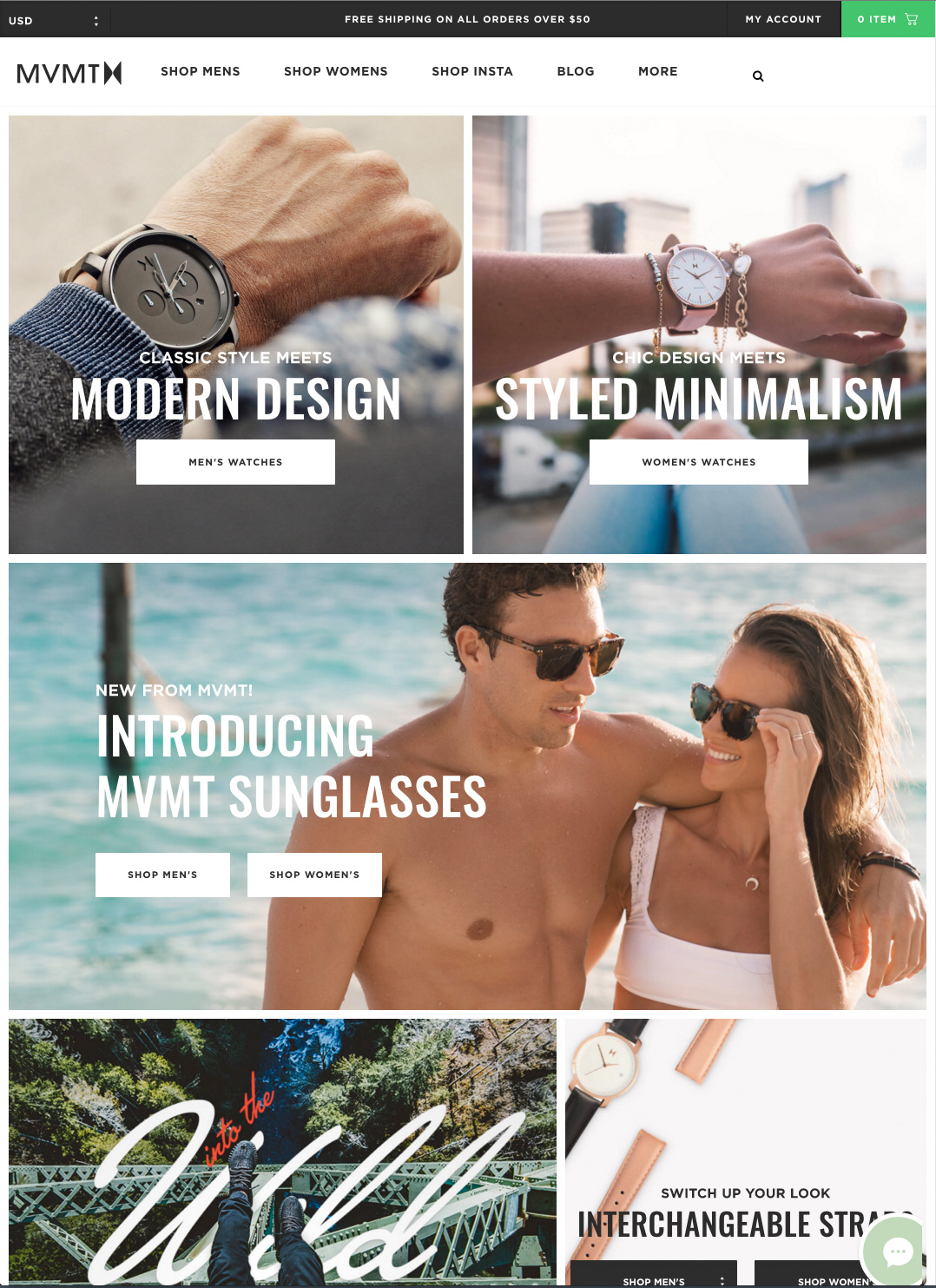
Image via mvmtwatches.com
Key Takeaways:
- Numerous signs indicate lost momentum, from faltering profits to poorly performing products or services
- Seasonal opportunities, employee insight, customer feedback and societal trends are some things that can help you identify missing opportunities
- Follow up with customers to learn what you could have done better
- Lucrative opportunities are often found when companies proactively respond to signals from their customers and engage with them regularly
Questions to Consider:
- Have you identified signs that your brand has lost momentum? Would a brand audit be in order?
- How might you reach out to employees to get their thoughts on your brand? Have you considered brand induction and training to make them into powerful brand ambassadors?
- In what ways could you capitalize on seasons, events or holidays to harness new opportunities?
- Have you considered giving your customers product samples, discounted access, bundled packages or freebies so they can sample or experience your brand first hand to understand or appreciate its’ superb merits?
- Have you investigated ways you could tie Corporate Social Responsibility brand strategies into a new growth opportunity, as Toyota and VH1 did?
[1] Michelle Hutton, http://www.edelman.com, “I Talk About Your Brand Because I Like My Friends,” September 2015.
[2] Kimanzi Constable, http://www.entrepreneur.com, “5 Signs That You’ve Lost Momentum in Your Business,” March 2016.
[3] Heather McCloskey, community.uservoice.com, “5 Overlooked Customer Feedback Opportunities That Are Product Insight Goldmines.”
[4] Jim Belosic, http://www.socialmediaexaminer.com. “10 Big Brand Facebook Tactics Any Business Can Use,” March 2014.
[5] Ronell Smith, http://www.moz.com, “How to Find Your Brand’s Disruptive Opportunity,” February 2016.
[6] Rodolfo Rinaldi Rincon and Hannah Lamb, http://www.thinkwithgoogle.com, “How Brands Can Seize Opportunities Around New Year Resolutions, ” December 2015.
[7] Amanda Stillwagon, http://www.smallbiztrends.com, “9 Ways You May Be Missing Opportunities To Build Your Brand,” May 2016.
[8] Jeff Fromm, http://www.millennialmarketing.com, “Marketing at Music Festivals: Playing to the Millennial Crowd, ” January 2014.
[9] Jordan Simon, http://www.vibe.com. “Toyota and VH1 Save the Music Partner Up for Lollapalooza and Chicago School Grants,” July 2016.
[10] http://www.clubmexicana.com/
[11] Damien Clarkson, http://www.theguardian.com, “Businesses and Entrepreneurs Seize Opportunities in Rise of Veganism, November 2014.
[12] Aimee Millwood, http://www.entrepreneur.com, “These 2 Young Entrepreneurs Seized the Time — and Success,” March 2016.







Leave a Reply
Want to join the discussion?Feel free to contribute!